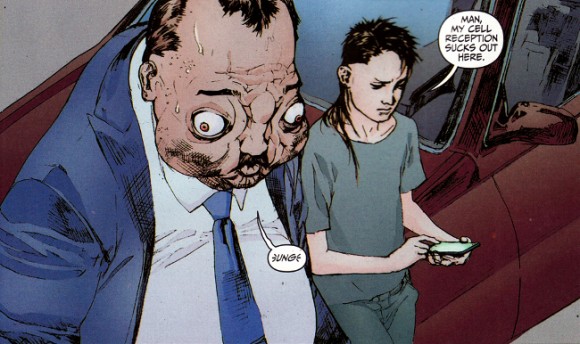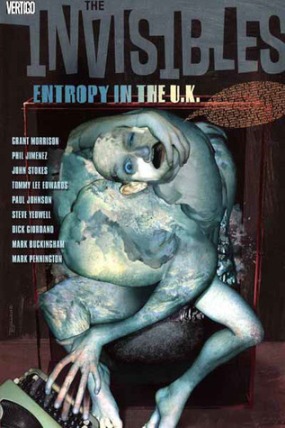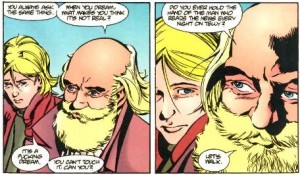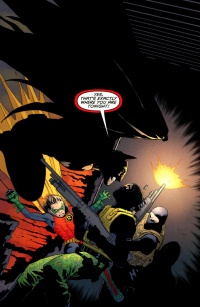
4 Elements: Mega Man
April 26th, 2012 Posted by GavokKids these days with their video games don’t know how good they have it. They have fully-realized stories right off the gate, treated to enough exposition and neat-looking cutscenes to paint a picture of what their game is all about. Guys like me and our Nintendo Entertainment Systems only got two paragraphs in the second page of the instruction manual and an ending. And if you were renting the game? Chances are you had to make a guess at what was going on.

The Mega Man games always had the barest of plots with just enough to make the sequels different in some way to what came before them. It got to the point where it would be, “The villain is this guy Dr. Cossack… oh, wait. It’s just Dr. Wily,” followed by, “The villain is Proto Man… oh, wait. It’s just Dr. Wily,” and so on. Just an excuse to keep giving us more of the same addicting gameplay. The endings were pretty dull until the SNES days with Mega Man X and Mega Man 7. The latter of which had the crazy-ass moment where Mega Man downright threatened to murder Dr. Wily on the spot.
While the later games introduced more story and cutscenes and even alternate futures and realities, the original games remained pretty barren. That is, until they released Mega Man: Powered Up in 2006, a PSP game that recreated the first game with new graphics, included a couple new characters (one of which being pretty racist-looking), gave everything a personality overhaul and allowed you to play through alternate versions of the game where the different boss characters switch places with Mega Man’s role and act as protagonists. While it crapped the bed in terms of sales, the ideas from it would be reused in the current Mega Man series released by Archie with Ian Flynn on words and Ben Bates on art. It’s a great comic and my only wish is that I’d be able to send it back in time to my ten-year-old self.

The series has finished its first year with twelve issues and three story arcs. The first covers the story of Mega Man 1, the second introduces Time Man and Oil Man from Powered Up (they fix the Oil Man controversy by putting a scarf over his mouth) and the third goes through the plot of Mega Man 2. The gist of the origin is that in the future, Dr. Light and his friend Dr. Wily have created a bunch of “Robot Masters” to help perform duties that will help out the human race and make the world a better, safer place. Due to Wily’s checkered past and notoriety in the public eye, Light insists that he stays out of sight for the press conference and the lack of limelight drives Wily over the edge. He rewires the six Robot Masters to do his bidding, has them attack the general public and plans some world domination. The only robots left unaffected are Rock and Roll, two housekeeping robots of Light’s who Wily felt were under his notice. With great reluctance, Rock volunteers to have himself turned into a battle-ready robot so he can bring his brothers back home and prevent Wily’s plot to take over the world.











